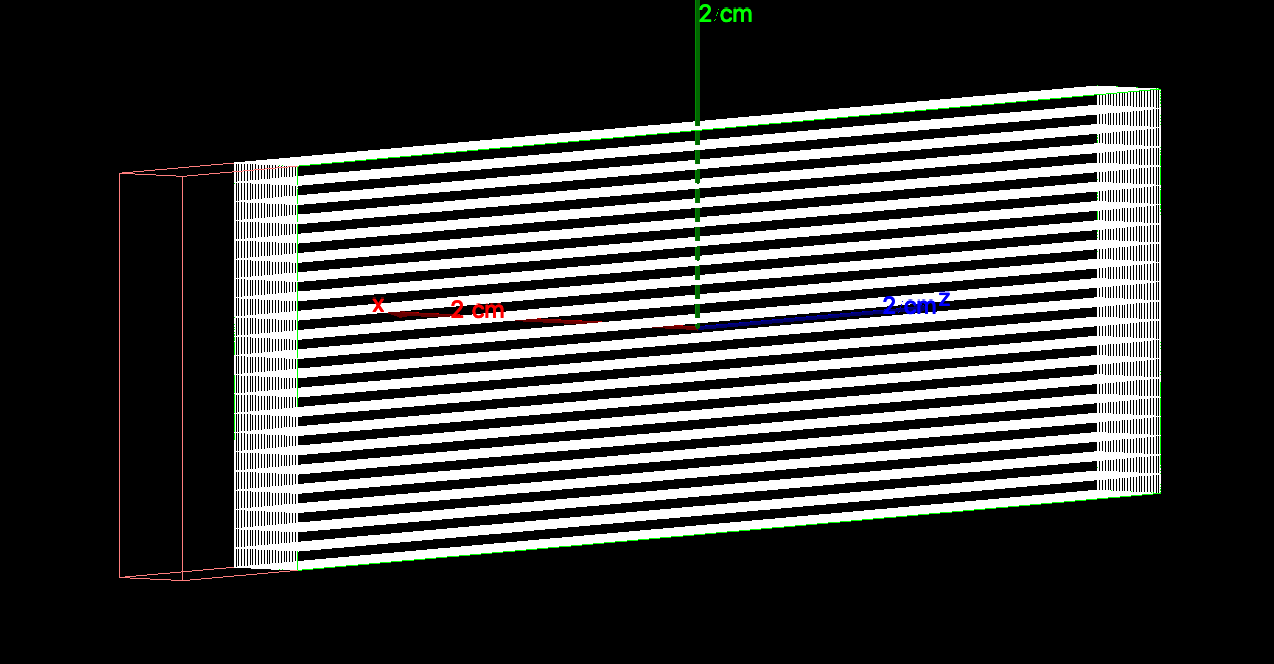Geant4 Version:
Operating System:
Compiler/Version:
CMake Version:
Hi, I’m developing a pixelated silicon detector with geant4.
I have a reference note about my simulation, and I don’t know which tool he used for the simulation(it’s not geant4… maybe it can be just a calculation tool), but the result of the note is considered to be accurate.
Sadly, my simulation results are quite different from the note.
But I think Geant4 is a very accurate simulation tool, so each result should be match.
I’ll explain my simulation briefly.
The red box is body Tissue which has a density of about 1 (like water), and 41*21 pixelated silicon detector is attached to it without any gap.
I set the detectorConstruction setting completely the same as the note says.
As a beginner of Geant4,
I think the physics list and OpticalPhysics can make the difference between the note and my result.
I’m using 1~100keV low energy gamma parallel beam(the mean is about 44keV) which goes from left to right on the upper image, and I’m using FTFP_BERT now.
Is it better to use G4EmPenelopePhysics or G4EmLivermorePhysics?
Also, I’m not sure but I’ve seen in the manual that the reflection, refraction, scattering, and Absorption process doesn’t operate well without using OpticalPhysics.
In my simulation, I’m using gamma and I have some boundaries so I think OpticalPhysics process can be important.
From an expert standpoint, any additional attempts to help implement the note’s results in simulation are welcome.
Thank you for helping me.
